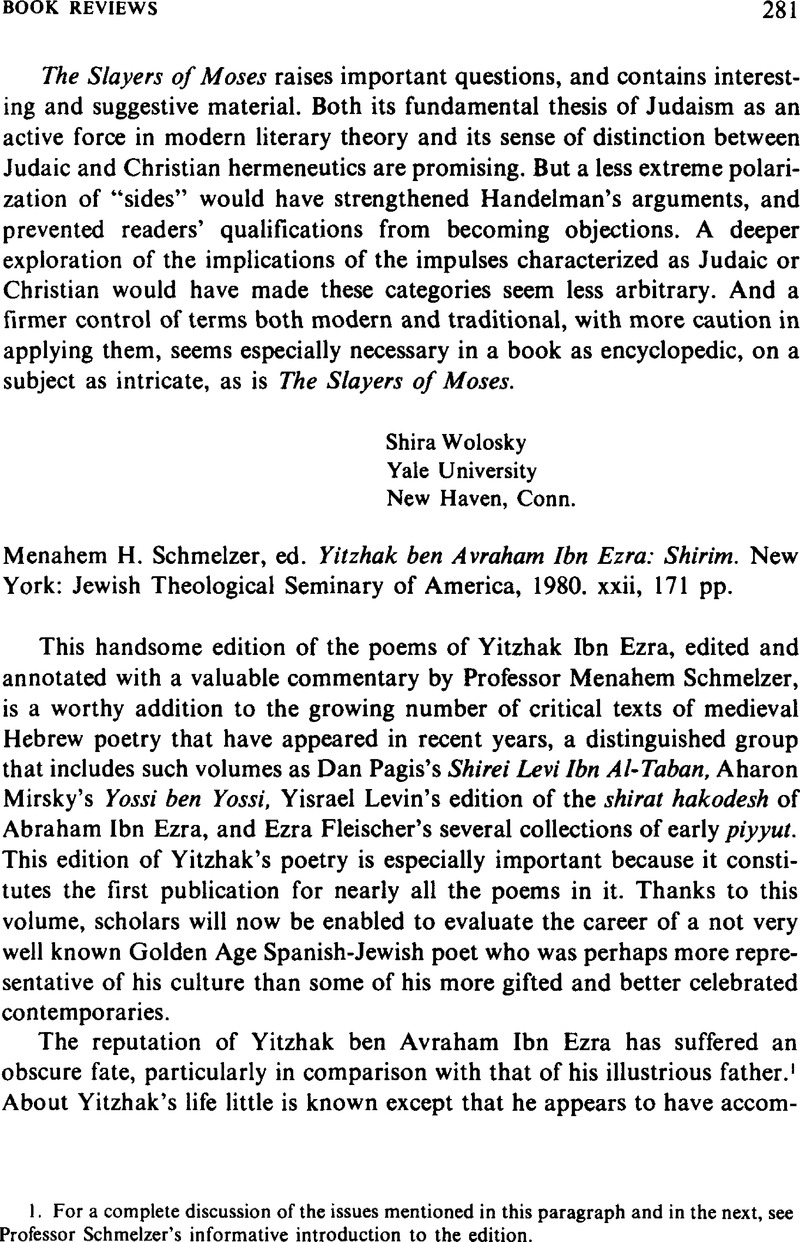No CrossRef data available.
Published online by Cambridge University Press: 15 October 2009

1. For a complete discussion of the issues mentioned in this paragraph and in the next, see Professor Schmelzer′s informative introduction to the edition.
2. On this poem and its biographical value, see the brief remarks of Hayyim Schirmann, published as note 29 in Haberman, A. M., “Regarding the Fate of the Diwan of Yitzhak Ibn Ezra” (Hebrew), Sinai, vol. 14, pp. 245–246.Google Scholar
3. For the correspondence between Silvera and Brody, see Haberman′s article, cited in the preceding note, and Appendix 2 of Professor Schmelzer′s edition.
4. For a different explanation and criticism of Schmelzer, see Alloni′s, Nehemia learned review-essay of the edition in Kiryat Sefer 56 (1981): 488–493.Google Scholar
5. A good text and translation of this poem is found in Carmi′s, T.The Penguin Book of Hebrew Verse (New York: Penguin & Viking, 1981), p. 356. It is significant that this is the single ′poem by Yitzhak that Carmi publishes.Google Scholar
6. Schirmann, Cf. H., Hebrew Poetry in Spain and Provence (Hebrew), 2d ed. (Tel AvivMosad Bialik, 1959), vol. 2, p. 625.Google Scholar